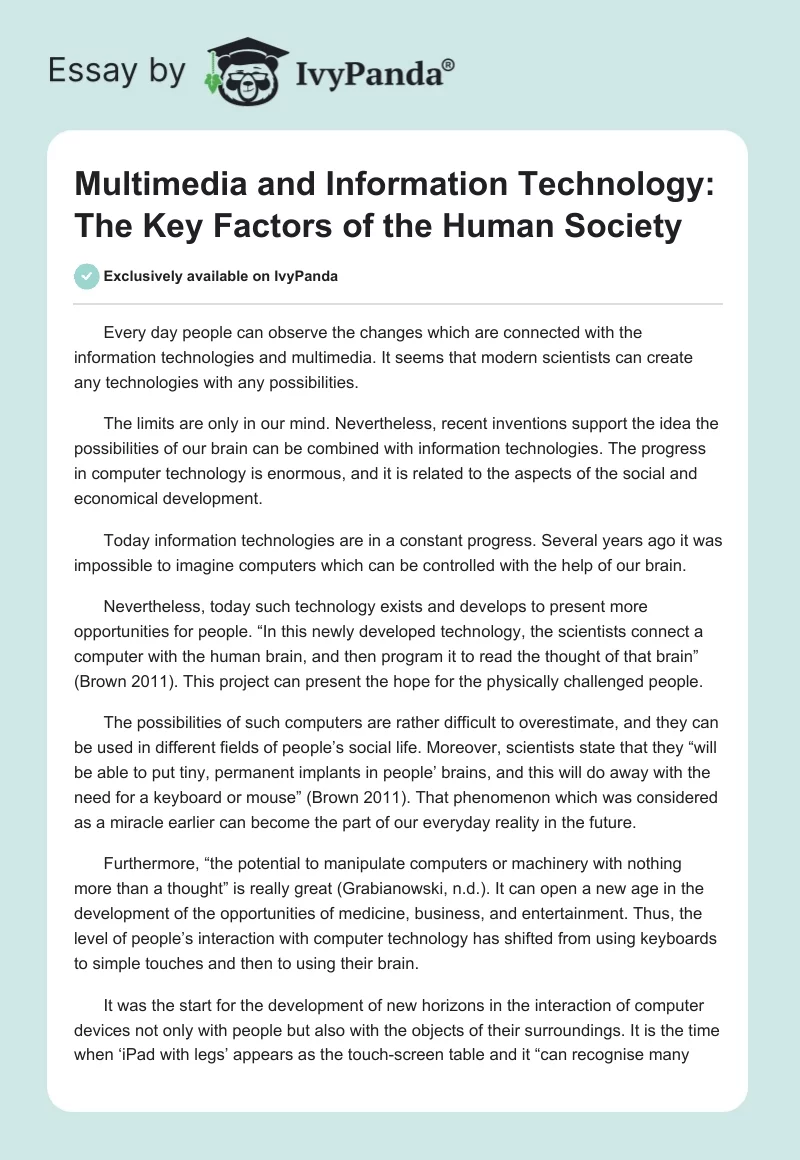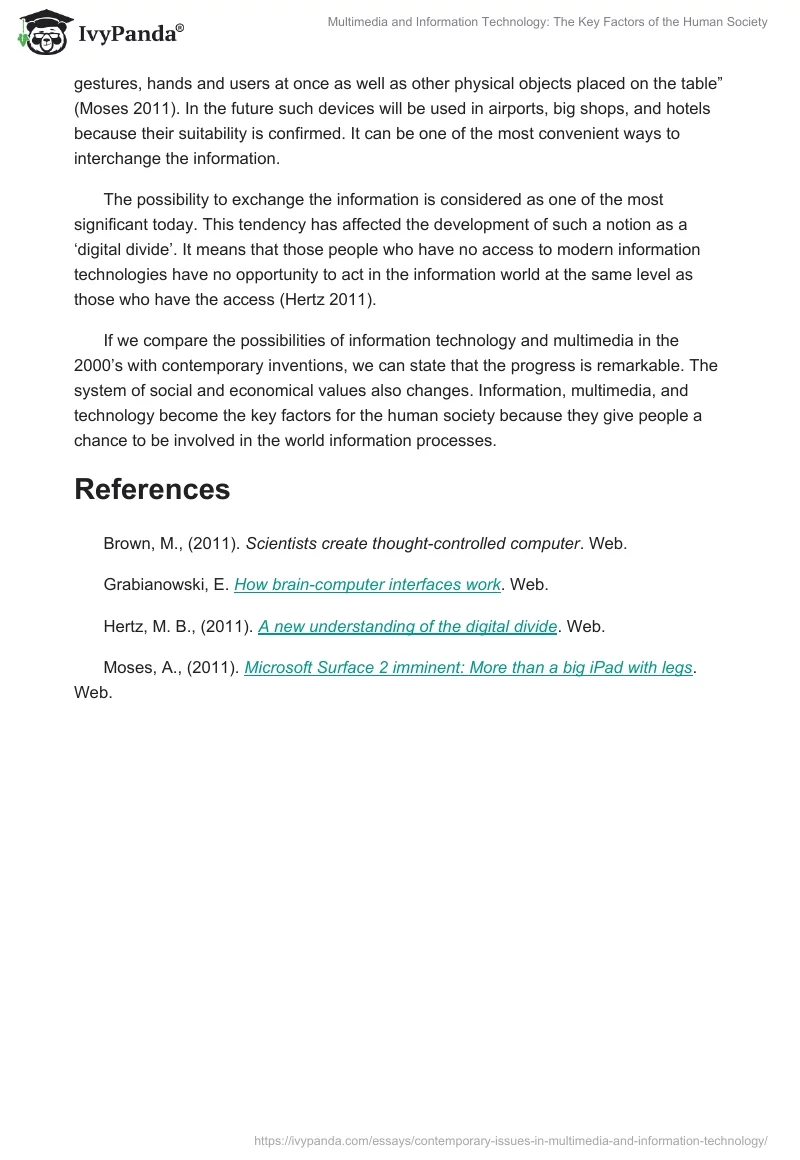Every day people can observe the changes which are connected with the information technologies and multimedia. It seems that modern scientists can create any technologies with any possibilities.
The limits are only in our mind. Nevertheless, recent inventions support the idea the possibilities of our brain can be combined with information technologies. The progress in computer technology is enormous, and it is related to the aspects of the social and economical development.
Today information technologies are in a constant progress. Several years ago it was impossible to imagine computers which can be controlled with the help of our brain.
Nevertheless, today such technology exists and develops to present more opportunities for people. “In this newly developed technology, the scientists connect a computer with the human brain, and then program it to read the thought of that brain” (Brown 2011). This project can present the hope for the physically challenged people.
The possibilities of such computers are rather difficult to overestimate, and they can be used in different fields of people’s social life. Moreover, scientists state that they “will be able to put tiny, permanent implants in people’ brains, and this will do away with the need for a keyboard or mouse” (Brown 2011). That phenomenon which was considered as a miracle earlier can become the part of our everyday reality in the future.
Furthermore, “the potential to manipulate computers or machinery with nothing more than a thought” is really great (Grabianowski, n.d.). It can open a new age in the development of the opportunities of medicine, business, and entertainment. Thus, the level of people’s interaction with computer technology has shifted from using keyboards to simple touches and then to using their brain.
It was the start for the development of new horizons in the interaction of computer devices not only with people but also with the objects of their surroundings. It is the time when ‘iPad with legs’ appears as the touch-screen table and it “can recognise many gestures, hands and users at once as well as other physical objects placed on the table” (Moses 2011). In the future such devices will be used in airports, big shops, and hotels because their suitability is confirmed. It can be one of the most convenient ways to interchange the information.
The possibility to exchange the information is considered as one of the most significant today. This tendency has affected the development of such a notion as a ‘digital divide’. It means that those people who have no access to modern information technologies have no opportunity to act in the information world at the same level as those who have the access (Hertz 2011).
If we compare the possibilities of information technology and multimedia in the 2000’s with contemporary inventions, we can state that the progress is remarkable. The system of social and economical values also changes. Information, multimedia, and technology become the key factors for the human society because they give people a chance to be involved in the world information processes.
References
Brown, M., (2011). Scientists create thought-controlled computer. Web.
Grabianowski, E. How brain-computer interfaces work. Web.
Hertz, M. B., (2011). A new understanding of the digital divide. Web.
Moses, A., (2011). Microsoft Surface 2 imminent: More than a big iPad with legs. Web.


